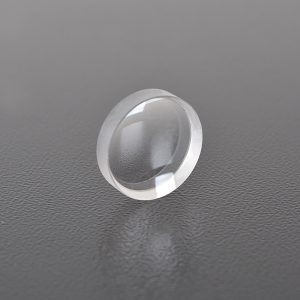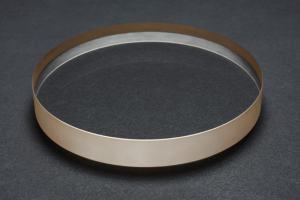
Lens R&D: The Core and Future of Optical Technology
From smartphone lenses to space telescopes, tiny curved surfaces change the way humans observe the world – nanometer-level precision carves the trajectory of light, and metamaterials and AI design are breaking through the limits of traditional optics, making the next technological revolution clearly visible in the refraction of lenses.
As the core component of optical systems, lenses are widely used in photography, medical care, communications, military, astronomy and other fields. From smartphone cameras to space telescopes, the design and manufacture of lenses directly determine the performance of optical systems. With the advancement of science and technology, lens research and development is moving towards higher precision, wider application and smaller size. This article will explore the basic principles, key technologies and future trends of lens research and development.
1. Basic principles and classification of lenses
Lens is an optical element that can refract light, and its working principle is based on the law of refraction of light. According to shape and function, lenses are mainly divided into the following categories:
1. Convex lens (converging lens): thick in the center and thin at the edge, it can converge parallel light to the focus, and is often used for magnification and focusing.
2. Concave lens (diverging lens): thin in the center and thick at the edge, it can diverge parallel light, and is often used to correct vision and reduce images.
3. Aspheric lens: The surface shape is aspheric, which can reduce aberration and improve imaging quality. It is widely used in high-end optical systems.
4. Fresnel lens: It is thinned by a stepped structure and is often used in scenes such as projectors and lighthouses.
2. Key technologies in lens research and development
Lens research and development involves multiple fields such as optical design, material science, precision machining and detection technology. The following are the key technologies:
1. Optical design
Optical design is the core of lens research and development. It aims to optimize the shape, curvature and material of the lens through mathematical models to achieve specific optical performance. Modern optical design software (such as Zemax, Code V) can simulate light propagation, calculate aberrations and optimize the design.
2. Material selection
Lens materials directly affect their optical performance and durability. Common materials include optical glass, plastics, crystals (such as quartz, sapphire), etc. In recent years, new materials such as chalcogenide glass and polymer composites are also being developed to meet special needs.
3. Precision machining
The manufacture of lenses requires extremely high precision, especially aspheric and free-form lenses. Common processing technologies include CNC grinding, polishing, injection molding, etc. Ultra-precision processing technologies (such as ion beam polishing) can achieve nanometer-level surface accuracy.
4. Coating technology
Lens surfaces usually need to be coated to reduce reflection, enhance light transmittance or achieve specific functions (such as anti-reflection, anti-fog, anti-scratch). Common coating technologies include vacuum coating, chemical vapor deposition (CVD), etc.
5. Inspection and calibration
Lens quality inspection includes surface morphology, optical properties (such as focal length, aberration), etc. Interferometers, wavefront sensors and other equipment are used for high-precision inspection.
3. Application fields of lens research and development
1. Consumer electronics
Smartphones, cameras, VR/AR devices, etc. have an increasing demand for lenses, especially the development of miniaturized, high-performance lenses.
2. Medical equipment
Medical instruments such as endoscopes, microscopes, and laser surgical equipment rely on high-precision lenses to achieve clear imaging and precise operation.
3. Communication technology
The lenses in optical fiber communication are used for coupling and focusing of optical signals. 5G and future 6G technologies have put forward higher requirements for lens performance.
4. Aerospace
Satellites, telescopes and other spacecraft require high-performance lenses that can withstand extreme environments to achieve long-distance observation and data transmission.
5. Autonomous driving
LiDAR and cameras are the core sensors of autonomous driving, and their performance depends on high-quality lenses.
4. Future trends in lens research and development
1. Miniaturization and integration
With the development of wearable devices and the Internet of Things, the size of lenses continues to shrink, and they need to be highly integrated with components such as sensors and processors.
2. Intelligence and adaptation
Intelligent lenses (such as adjustable focus lenses and liquid lenses) can automatically adjust optical parameters according to the environment to improve user experience.
3. New materials and new processes
The application of new materials such as nanomaterials and metamaterials will promote breakthroughs in lens performance, and new processes such as 3D printing will also change traditional manufacturing models.
4. Green manufacturing
Environmentally friendly materials and energy-saving processes will become important directions for lens research and development to reduce the impact on the environment.
5. Multidisciplinary integration
Lens research and development will be deeply integrated with artificial intelligence, quantum technology, biotechnology and other fields to open up new application scenarios.
Conclusion
Lens research and development is the cornerstone of the development of optical technology. Its progress not only promotes the innovation of modern science and technology, but also provides an important tool for human beings to explore the unknown world. In the future, with the continuous emergence of new materials, new processes and new demands, lens research and development will continue to lead innovation in the field of optics and bring more possibilities to human society.
Hanzhong Brisun Optics Co., Ltd. Is the high precision optical element manufacturer provides customized production of Various optical lenses, including spherical lens, cylindrical lens, optical window, mirror, prism, filter, metal base mirror and other high-precision optical elements. The base materials include various optical glass, fused quartz, calcium fluoride (CaF2), zinc selenide (ZnSe), germanium (GE), silicon (SI), sapphire, metal and other materials. And provide antireflective film, high reflection film, spectroscopic film, metal film and other optical coatings.
Welcome to OEM and Purchasing!


